

ECMWF news highlights in the first seven months of 2018 include a major upgrade of the Integrated Forecasting System (IFS); a series of events to drive forward numerical weather prediction; the launch of the Climate Data Store; and the appointment of a new Director of Computing.
Better forecasts
A wide-ranging upgrade of the IFS, implemented on 5 June 2018, brought better global weather forecasts, with particularly consistent gains in the extended range.
New products introduced in IFS Cycle 45r1 include forecasts of lightning flash density.
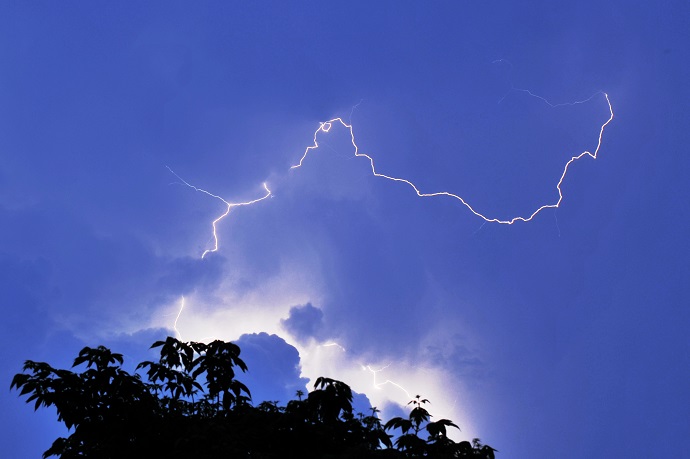
Lightning is impressive to behold but can pose multiple hazards. (Photo: Lennart Sorth)
A key plank of the upgrade was enhanced dynamic coupling between the ocean, sea ice and the atmosphere. For example, high-resolution forecasts can now reflect rapid changes in sea ice concentration.

The 6-day high-resolution forecast for 24 February 2018 using the coupled model (left) captured a wind-driven opening in the sea ice cover near Cape Morris Jesup in northeast Greenland (right). Wind arrows show the preceding 24-hour mean 10 m wind field. (Satellite image: European Space Agency via the Danish Meteorological Institute)
Meanwhile, coupling the ocean and the atmosphere in the forecast model leads to better predictions of tropical cyclone intensity.
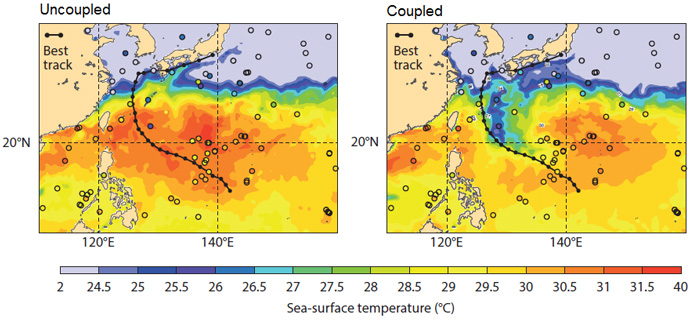
Five-day sea-surface temperature (SST) forecasts for the area of typhoon Neoguri starting on 5 July 2014 using the uncoupled model (left) and the coupled model (right). SST observations from ships and buoys (circles) confirm that the coupling leads to more realistic SST predictions along the path of the cyclone (‘best track’ data – black line), which in turn improves the prediction of tropical cyclone intensity.
The Using ECMWF’s Forecasts (UEF) meeting from 5 to 8 June provided a timely opportunity to update participants on the changes.
The theme of the event was that ‘the only limit is your imagination’ when turning weather data into useful information.

Participants in the UEF 2018 meeting were able to test the use of virtual reality to visualise weather data.
A new, online edition of ECMWF’s user guide was published in May, providing all the tools needed for the correct use and interpretation of ECMWF products.
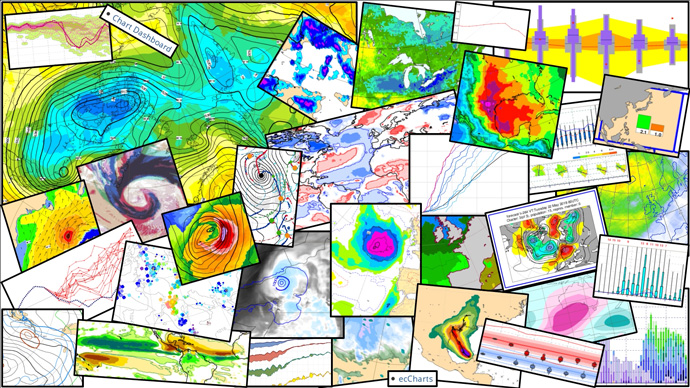
Driving forward weather science
The first half of 2018 saw a series of major international weather science workshops at ECMWF, including on ocean observations, radiation in forecast models, and physics–dynamics coupling.
More than 50 ocean and data assimilation experts came together at ECMWF from 22 to 25 January to discuss the way forward for the use of observations of sea-surface temperature and sea ice in numerical weather prediction and climate applications.
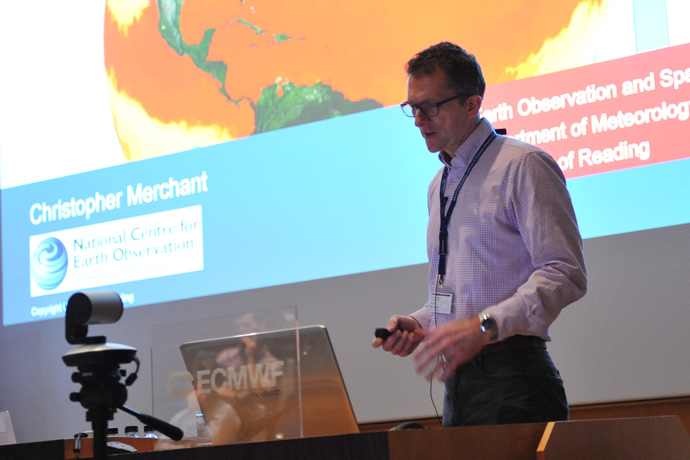
Chris Merchant from the University of Reading gave a talk on ‘Quantifying the thermodynamic state of the global ocean surface’.
The third Physics–Dynamics Coupling workshop (PDC18) from 10 to 12 July brought together more than 50 weather and climate scientists, who looked into better ways to couple small-scale physical processes and large-scale atmospheric dynamics in Earth system models.

Members of the PDC18 organising committee agreed that improving physics–dynamics coupling can lead to better weather forecasts.
International Women’s Day on 8 March was a good opportunity to celebrate the achievements of some of the women working in weather science at ECMWF.

Climate Data Store launched
On 14 June, the EU-funded Copernicus Climate Change Service (C3S) implemented by ECMWF launched Europe’s Climate Data Store (CDS), a one-stop shop for past, present and future climate information.
The CDS greatly improves access to climate data and tools, is open and free for all to use.
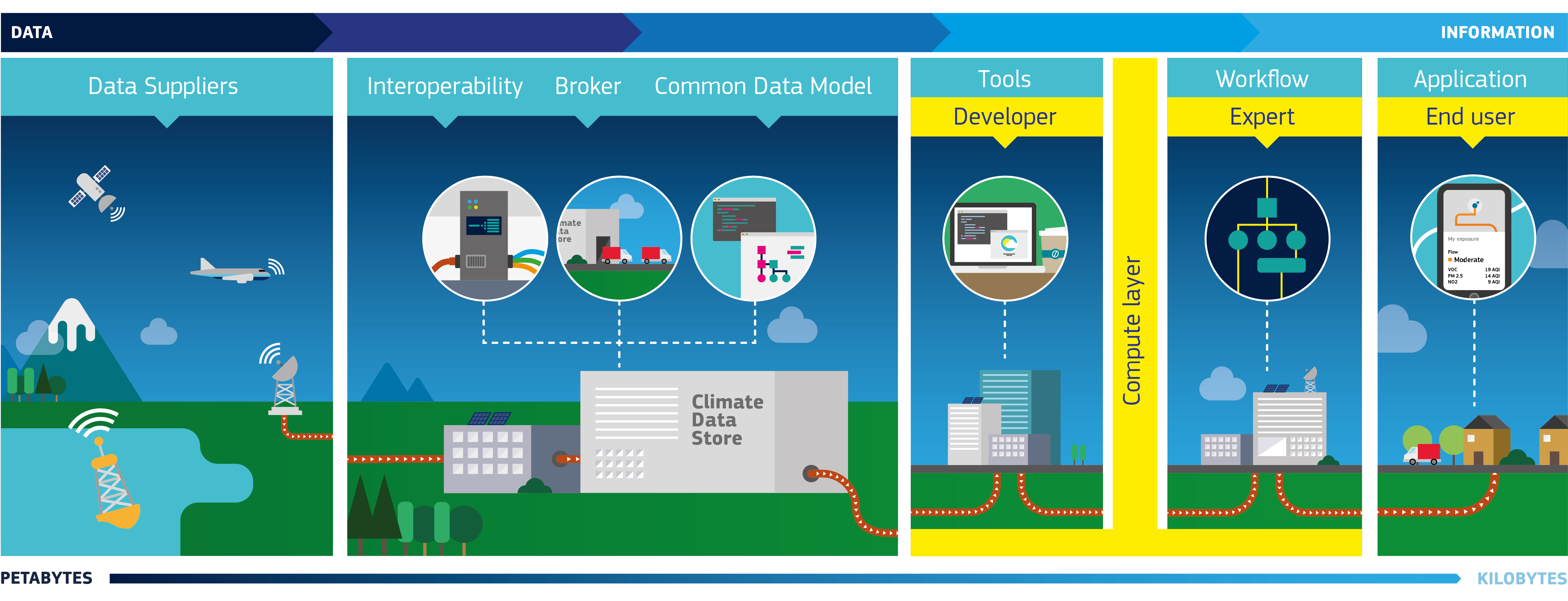
The CDS includes tools that enable climate data to be transformed into information relevant to different sets of users.
State of the Climate
Two months earlier, C3S and the Copernicus Atmosphere Monitoring Service (CAMS), which is also implemented by ECMWF, released the European State of the Climate 2017 report.
One of the findings was that in the European sector of the Arctic, sea ice cover was much lower than average during the first three months of the year.

Sea ice cover for January 2017, the month with the year’s largest anomaly in the European sector of the Arctic, and for July 2017, the month with the smallest anomaly. The pink line denotes the 1981–2010 average sea ice edge for the month. (Charts: ECMWF Copernicus Climate Change Service)
Data released by C3S at the start of the year showed that 2017 was the third in a row of exceptionally warm years.
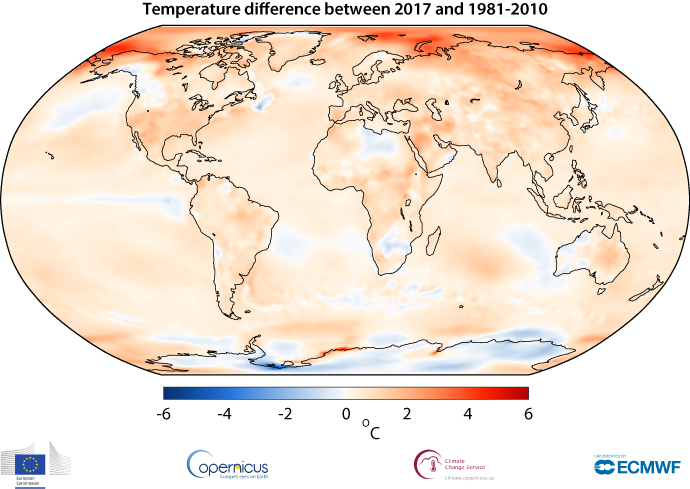
Air temperature at a height of two metres for 2017, shown relative to its 1981–2010 average. (Source: Copernicus Climate Change Service, ECMWF)
New Director of Computing
Last but not least, ECMWF appointed Dr Martin Palkovič as ECMWF’s next Director of Computing from 1 October 2018. He succeeds Prof. Adrian Wander, who will step down after a transition period to ensure a seamless handover.
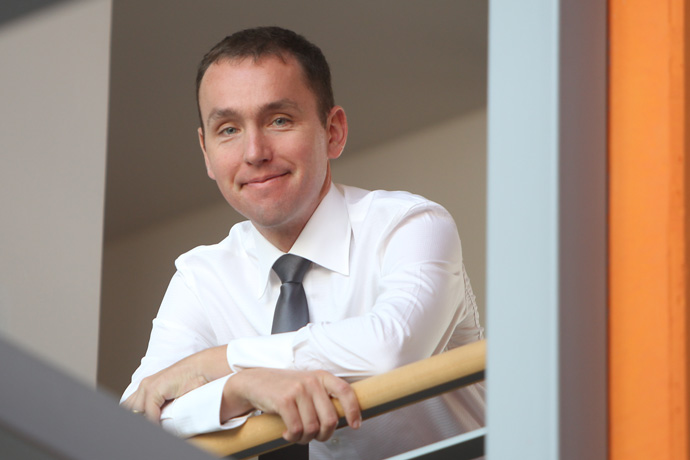
Dr Palkovič is currently the Vice President of Engineering at Codasip Ltd in Brno, Czech Republic, where he is responsible for the management of R&D as well as collaboration with academic communities and national and EU representatives. (Photo: Sznapka Petr)
